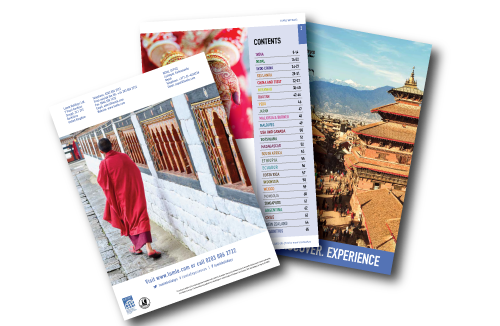- Home
- Company
- Destinations
- Activities
- Essential Info
- News
- Contact
ATOL & ABTOT Protected | USTOA Member – Trusted Worldwide
Before you embark on your trip to Italy, it’s essential to be well-prepared so that you can make the most of your visit. Italy is a country filled with rich history, stunning landscapes, world-class cuisine, and vibrant culture, but there are a few things to consider to ensure a smooth and enjoyable experience. From visa requirements to packing tips and local customs, here’s what you need to know before you go to Italy.
1. Check Visa Requirements
Italy is part of the Schengen Area, which allows visa-free travel for up to 90 days for citizens of many countries, including EU member states, the USA, Canada, Australia, and New Zealand. If you’re from a country that requires a visa to enter the Schengen Zone, you’ll need to apply for a Schengen Visa in advance. Make sure your passport is valid for at least three months beyond your planned departure date. Check with your local embassy or consulate for specific visa requirements based on your nationality.
2. Get Travel Insurance
While travel insurance is not mandatory for entering Italy, it is highly recommended. Travel insurance can protect you from unforeseen events such as medical emergencies, trip cancellations, lost luggage, or delays. Italy has an excellent healthcare system, but medical costs can add up if you’re not covered. Choose a travel insurance policy that includes health coverage, especially if you plan on skiing, hiking, or engaging in other adventurous activities.
3. Currency and Payment Methods
Italy uses the Euro (€) as its official currency, and credit and debit cards are widely accepted in most cities, especially in tourist areas. However, it’s always a good idea to carry some cash, particularly if you’re visiting smaller towns or rural areas where card payments might not be accepted. ATMs are readily available in cities, and it’s often best to withdraw cash locally for better exchange rates. Notify your bank in advance if you plan on using your card abroad to avoid any blocks or issues.
4. Learn Basic Italian Phrases
While English is commonly spoken in tourist areas, particularly in Rome, Florence, and Venice, learning a few basic Italian phrases can go a long way in making your trip more enjoyable. Simple phrases like “Buongiorno” (Good morning), “Grazie” (Thank you), and “Per favore” (Please) are appreciated by locals and can enhance your interactions. In smaller towns and rural regions, knowing some Italian will be even more useful as fewer people speak English fluently.
5. Best Time to Visit
Italy is a year-round destination, but the best time to visit depends on the type of experience you’re seeking. The spring (March to May) and autumn (September to November) months are perfect for sightseeing in cities like Rome, Florence, and Venice due to the mild weather and fewer tourists. Summer (June to August) is ideal for coastal vacations along the Amalfi Coast, Sicily, or Sardinia, but expect higher temperatures and large crowds. Winter (December to February) is great for skiing in the Italian Alps or visiting cities when they are less crowded, though coastal areas may be quieter during this period.
6. Pack Appropriately
What you pack will depend on the season and the regions you plan to visit. In summer, pack lightweight clothing, sunglasses, and sunscreen, as temperatures can soar in cities like Rome and Florence. For spring and autumn, bring layers, as temperatures can fluctuate during the day. In winter, especially if you’re visiting northern Italy or the Alps, pack warm clothing and a waterproof jacket. Comfortable walking shoes are a must year-round, especially for exploring cities with cobblestone streets and hilly areas, such as Florence and Venice.
7. Public Transportation and Getting Around
Italy has an excellent public transportation system that makes it easy to get around. In cities like Rome, Florence, and Milan, you can rely on buses, trams, and metros to explore urban areas. For intercity travel, Italy’s high-speed trains, such as the Frecciarossa and Italo, offer fast and comfortable connections between major cities like Rome, Venice, and Florence. If you plan on exploring rural regions, especially in Tuscany or the Amalfi Coast, renting a car may be a good option, but be aware that city driving can be challenging due to traffic, narrow streets, and limited parking. Make sure to familiarize yourself with Italy

Our team is at your service to help you with your booking issues or answer any related questions
1-888-214-4856
Start planning your tailor-made holiday by contacting one of our specialists of Italy
1-888-214-4856 Make an Enquiry

Written by our travel specialists, our brochures highlight the incredible places you can explore and help simplify the choices when planning your trip. Whether you’re ready to enquire or just gathering ideas, we’re here to support you.
Our customers praise our staff’s professionalism and the world-class service we consistently provide.
ATOL and ABOT protected company. Plus, a refund within 14 days if your holiday is cancelled.
Our specialists have in-depth knowledge from extensive travel or living in the regions they manage.
Our prices are unmatched. Find a better deal, and we’ll refund the difference within 24 hours.